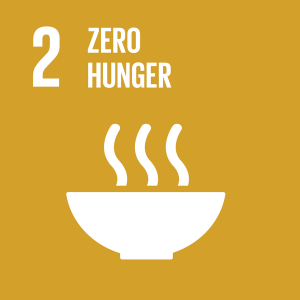goal 2: End hunger, achieve food security and improved nutrition and promote sustainable agriculture


This goal includes a set of objectives that include eradicating hunger and ensuring that everyone, especially the poor and vulnerable groups, including infants, have sufficient food, as well as achieving the internationally agreed goals on stunting and wasting in children under five years of age, and addressing nutritional needs For adolescent girls, pregnant women and elderly diseases by 2030, the goal also includes doubling agricultural productivity and the income of small food producers while ensuring the existence of sustainable food production systems and preserving the genetic diversity of seeds, cultivated plants, domesticated animals and pets. Below are the most prominent achievements in Iraq:
- • The Poverty Reduction Strategy 2018-2022 has adopted several programs and policies that aim to eradicate hunger, improve nutrition and enhance agricultural productivity through:
- • Improving productivity and providing job opportunities by motivating graduates of agricultural colleges and institutes to establish agricultural projects and companies, establishing peasant associations for small farmers to provide support in production and marketing, training on the use of agriculture and irrigation responsive to climate change, establishing projects with integrated production and service activities for the rural poor, system reform The ration card and linking it to the database of those covered by the social protection network to target the poor and include them with subsidized food supplies to secure their food, implement the school feeding program in poor areas, and raise awareness campaigns to improve the quality of food in poor and remote areas.
The government has also adopted in its plans many programs to provide and improve food production in cooperation with the International Agriculture Organization (FAO), including the use of new salt-resistant seeds, embryo technology transfer and the return of animal genetic assets, programs to enhance water and land, programs to address land degradation and improve water management and irrigation Water-side early warning, introduction of new technology in water saving and genetic conservation, animal health programs against communicable diseases, plant protection programs, and water desalination projects in agriculture.
